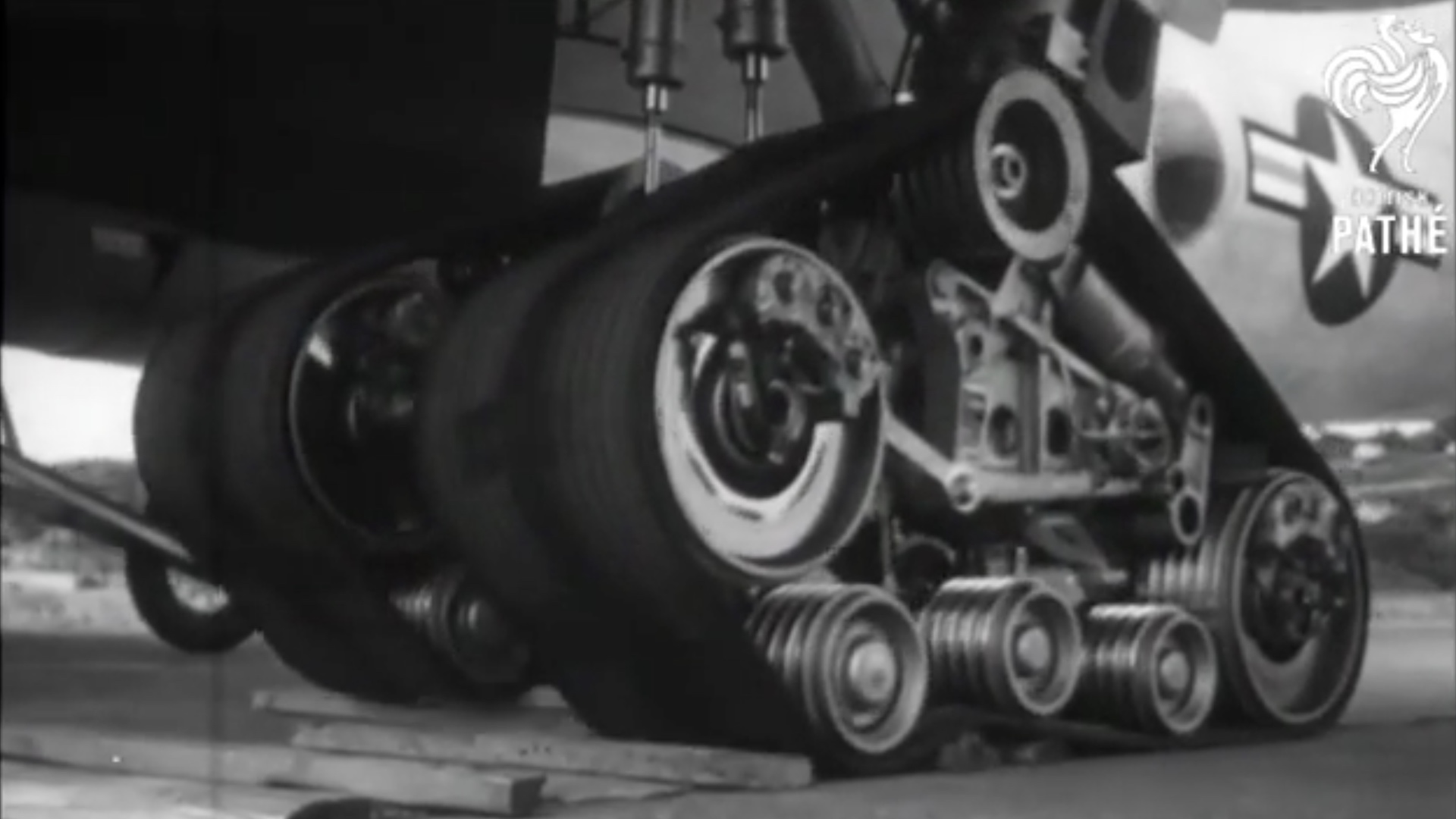

Back in the 1940s, the U.S. military was looking for a way to operate heavy bombers without building heavily reinforced runways. Its solution came, of course, from other heavy vehicles built to travel less-than-ideal terrain: tanks. Tank treads can handle anything from slick ice to thick mud, and the military thought they would surely work just as well on aircraft. As the military came to discover, however, what works on a Sherman doesn’t necessarily work on a Superfortress, and if anything, it can just make the plane worse.
The concept was tested extensively on a variety of aircraft and from the get-go showed significant teething issues. From reduced aircraft performance to collecting mud and even outright failing during tests, it wasn’t promising from the start. Nevertheless, experiments with tracked landing gear pushed forward and by the end of the decade, Boeing had affixed a set to a B-50B Superfortress.

According to an Air Force Materiel Command blog post, the test plane’s landing gear had been supplied by Firestone and Goodyear, which produced the nose and main gear respectively. As neither company had a wealth of relevant knowledge to draw on, both mechanisms came out half-baked. Goodyear’s main gear is said to have “interfered with the defensive gunnery pattern of the aircraft,” and due to difficulty manufacturing strong enough belts, they were only rated for a maximum ground speed of 70 mph. That’s a whole 35 mph short of the B-50’s stall speed of 105 mph, according to Air Wing Media.
Firestone fared little better, as its nose gear was deemed “unusable for flight testing,” forcing taxiing tests to be performed under the power of a tow truck. Eventually, though, the aircraft was cleared to make a test flight, which it did in early 1949 with media present, who filmed the landing for posterity.

Due to problems with bearing failures and complex maintenance, further testing of tracked landing gear on the B-50 was limited and entirely discontinued after Boeing fulfilled its contractual obligations by January 1950. That wouldn’t mark the end of experimentation, though. That March, tracks would be tested on what was then the largest plane in the United States Air Force at the time, the B-36 Peacemaker—though they’d only be tested once. Takeoff was said to be particularly rough, and on landing, the treads left a trail of parts after touchdown. Having been deemed a failure, the concept was subsequently abandoned.
In retrospect, it’s easy to see why treads weren’t compatible with planes. Their sheer mass and complexity make them unsuitable for high-speed operation, which is why even the fastest tracked vehicles today top out at barely highway speed (a Ripsaw will do about 60 mph). Of course, the only way they could’ve known for sure was by trying, and trying makes for more interesting history than not every time.
Got a tip or question for the author? You can reach them here: james@thedrive.com